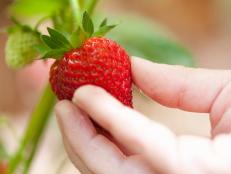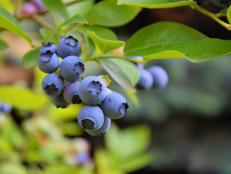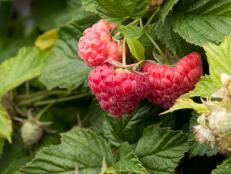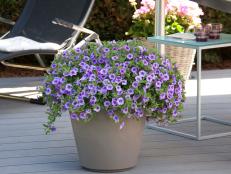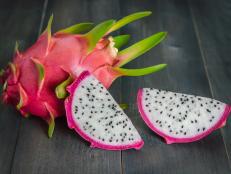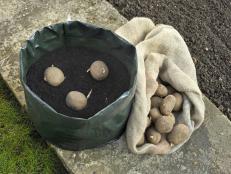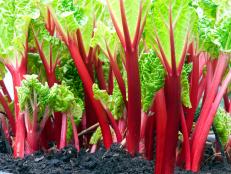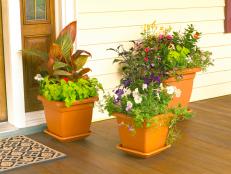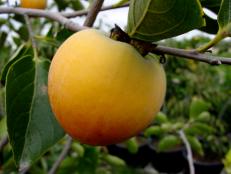How To Grow Blackberries in Containers
Learn how to grow blackberry plants in pots and beds. Follow this back-to-basics guide to raise your own crop of tasty blackberries.
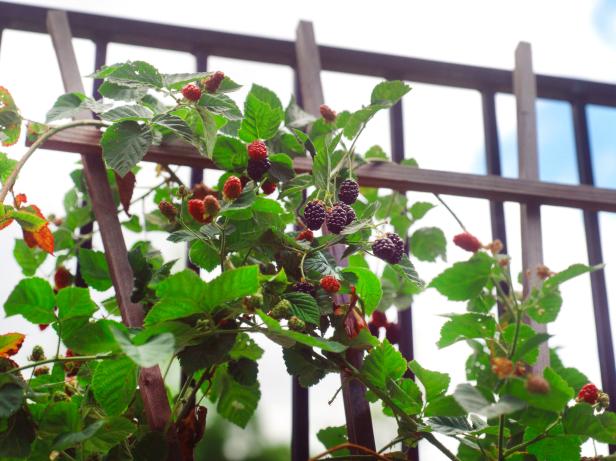
Sweeten your summer harvest with a crop of sun-ripened blackberries. Luscious blackberries boast good-for-you nutrition in a juicy package that’s perfect for whipping up pots of jam, chunky cobblers and pastry-swaddled pies. Of course, these tasty berries are also delicious right off the bush.
The best part is that growing blackberries is easy. You don’t need to master tricky techniques to enjoy the sweet reward of juicy berries. This crop also doesn’t demand a big yard to reap a sizeable harvest — you can even grow blackberries in pots. Here’s what you need to know to grow your own bumper crop of blackberries.
Buying Berry Plants
You can buy berry plants potted or as bare-root cuttings or rooted plugs. Potted plants (quart or larger pots) are most often sold at nurseries or garden centers, although you can find small plants in 4" pots for sale through mail order. Bareroot cuttings and rooted plugs are almost exclusively sold mail order. Typically you’ll plant both in early spring, as soon as the soil is warm, so plants have a whole growing season to establish a strong root system before cold weather arrives.
Where to Plant Blackberries
Wild blackberries grow in light shade to full sun, but named varieties thrive in full sun. The exception is in the hottest parts of the country (think Deep or Coastal South, Desert Southwest). In these areas, light afternoon shade helps protect plants from excessive heat. Prepare soil so it has plenty of organic matter, like rotted manure or compost. This ensures that soil has the ability to hold moisture, but also drains well. For blackberries in pots, use a commercial potting mix designed for containers.
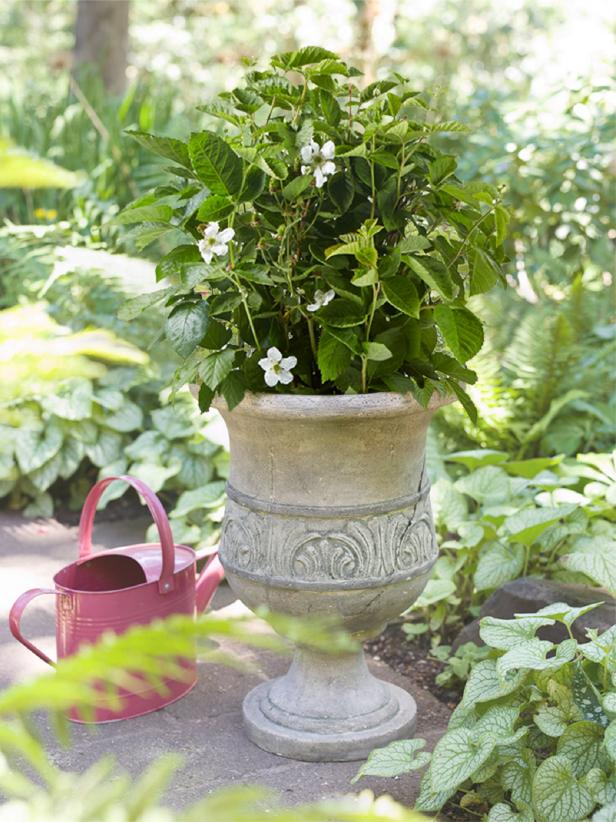
BaileyNurseries.com
What Size Pot for Blackberries
Choose a pot as large as 24" to 36" across or even a half whiskey barrel. As blackberries grow, over time each original stem sends up more shoots from the roots to form a patch. A larger pot gives your berries ample space to spread and yield more stems, which means more fruit.
Caring for Blackberries
Blackberries are super easy — they’re basically wired to grow. In some areas of the country, wild blackberries are actually a nuisance and noxious weed. Keep soil consistently moist (roughly an inch of water per week) for best growth. Feed plants with a balanced fertilizer (all three numbers the same) in early spring when new growth appears and again in late spring. Alternatively, add an inch or two of compost to plants in early spring to give some extra nourishment.
How Blackberries Grow
It takes a blackberry stem (also called a cane) two years to produce berries. The first year, the stem grows, producing leaves. The second year is when flowers and berries appear. The exception to this rule is fall-bearing blackberries, which can produce berries in late summer to early fall on stems that appeared the previous spring.
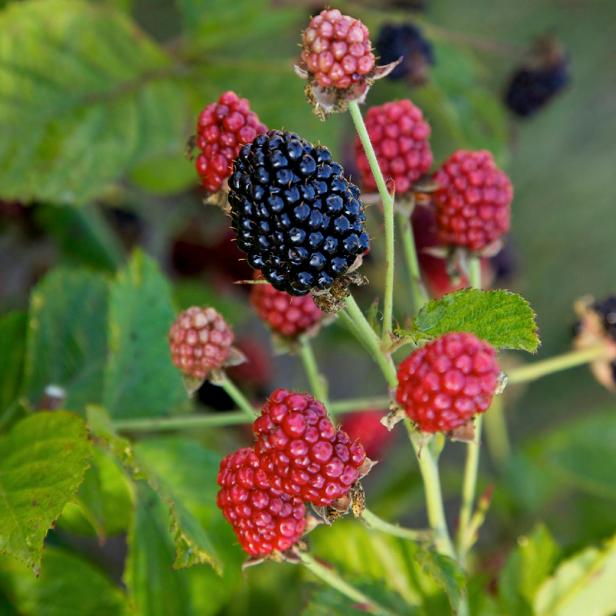
BaileyNurseries.com
How to Prune Blackberries
Understanding how blackberries grow is the key to pruning. If you’re growing a variety that ripens berries in summer, remove stems (canes) after you pick the berries, cutting them to the ground. Use this same technique with dwarf berries, too. The reason for doing this is that two-year-old cane produces nice size berries, but if you let those stems remain, berry size will dwindle each year to come.
For fall-bearing varieties, remove about an inch from stem tips in spring, after leaves emerge and stems are 12" tall. Remove another inch from stem tips when they reach about 30" tall. This type of pruning results in more berries that ripen sooner. In spring after stems leaf out, remove any canes that fail to sprout.
How to Stake Blackberries
The best way to stake blackberries is by following the recommendations for your specific variety. Some varieties are trailing types and definitely need a wire trellis to keep stems upright, which makes it easier to tend the plants. Thornless varieties are often grown around an upright stake, with individual stems tied to the pole. This creates an umbrella-type appearance that looks nice in any yard. Or you can train them to an entry arch to create pretty edible landscaping.
Best Blackberry Varieties
Plant breeders have been working to develop outstanding blackberry varieties for decades. Some of the places with active breeding programs include the University of Arkansas, North Carolina State University and the USDA Agricultural Research Service lab in Beltsville, Maryland.
- Baby Cakes—Thornless dwarf blackberry. Ideal for containers and small gardens. Yields two crops in one season: summer, fall. Hardy in Zones 4-9.
- ‘Apache’—Thornless blackberry with upright stems that need little space to fruit and grow. Performs well in warmer regions. Hardy in Zones 6-10.
- ‘Arapaho’—Thornless blackberry with upright canes that make for easy picking. Early ripening. Good disease resistance. Grows well as far south as North Florida. Hardy in Zones 6-8.
- ‘Kiowa’—Very large berries; takes only 70 to weigh a pound (compared to 400 ‘Arapaho’). Needs little winter chilling and fruits well as far south as Central Florida. Hardy in Zones 5-8.
- Prime-Ark—Thornless blackberry with upright canes. Good disease resistance. Several types available. Prime-Ark ‘Freedom’ and ‘Traveler’ are thornless. Hardy in Zones 5-9. Prime-Ark 45 has thorns and is hardy in Zones 4-9.
- ‘Triple Crown’—Thornless blackberry with semi-trailing canes. Trellis or grow upright. Hardy in Zones 5-9.







